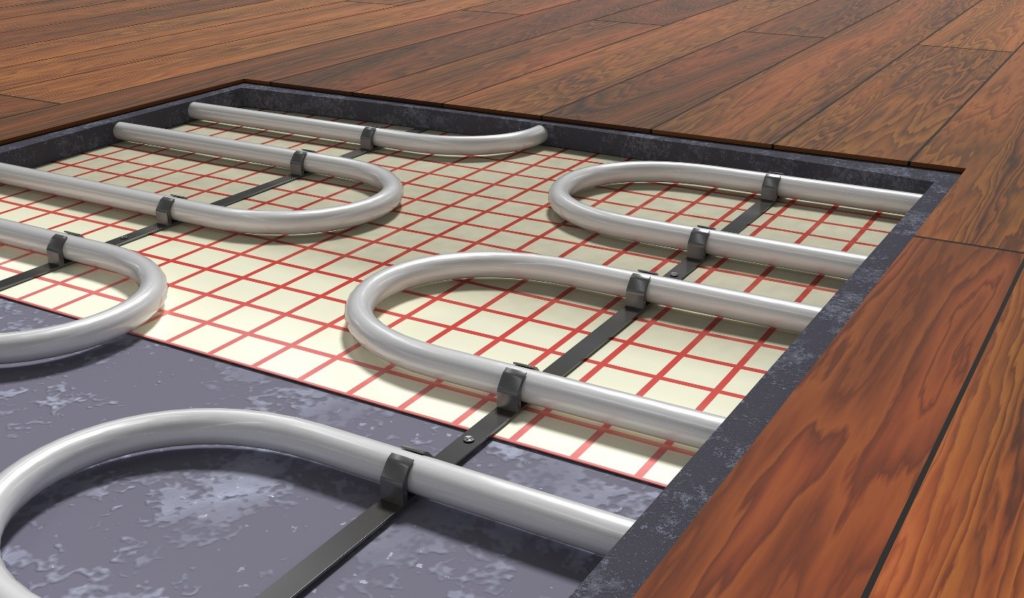As we head towards autumn and winter and much cooler days, thoughts often turn to how we can prepare for this cold spell through improvements in the home. Tackling any draughts is a good start, and you can find plenty more top tips for the home in our blog post: Getting the home ready for autumn. However, guaranteed winter warmth comes with underfloor heating (UFH) — whether that’s in the bathroom, the kitchen, or throughout the house. There’s no joy quite like stepping barefoot on the floor, bracing yourself for the chill, and then being pleasantly surprised by a delightfully cosy heat underfoot. Not only does UFH heat up the floor, it heats the entire room from the floor upwards.
What is underfloor heating?
In a nutshell, underfloor heating turns your entire floor into a radiator, which then heats the room. Once the temperature of the floor rises above the temperature of the air, the heat gets spread evenly across the whole of the floor, leaving no cool patches. This heat then spreads through the air, from the floor towards the ceiling.
How does UFH work?
There are two types of underfloor heating: ‘wet’ and ‘dry’. In the wet underfloor heating system, warm water is pumped through piping which runs below the floor, and the dry underfloor heating system involves electric coils being heated up under the flooring. Insulation is installed underneath both of these to direct the heat upwards. Both types work on the basic principle that heat rises, and so while heat from standard radiators heads upwards, avoiding the floor, underfloor heating makes sure you get heat where you want and need it most.
In a survey, Which.co.uk found that 65% of underfloor heating owners have the ‘dry’ electric system installed, and 35% have the water system, which could have something to do with the difference in price.

What’s the best flooring for underfloor heating?
Underfloor heating can be installed under tiles, solid wood, engineered wood flooring, laminate, carpet and luxury vinyl tiles. Solid and engineered wood are popular choices — after all, what is cosier than walking on heated wood on a cold winter’s day? However, do bear in mind that you’ll need to acclimatise the wood to the room before installation. Due to the fact natural wood expands and contracts, it is recommended more for rooms with a lower moisture level than the bathroom. Talk to your installer if you have any concerns, as they will have plenty of experience and will know all the top tips and tricks for laying underfloor heating under wooden surfaces.
Is UFH more energy efficient than radiators?
Underfloor heating is generally more energy efficient and therefore cheaper to run than a typical radiator, as the surface area is much larger and it delivers the heat where you want it — it can therefore be run at a lower temperature for similar results. However, it really depends on several factors, such as flooring type, how often you use the heating, and how well insulated your house is. There’s no denying the fact that heating your rooms from the floor upwards means you are making better use of the heat that’s being produced though.
If you’re considering underfloor heating for your home and would like to discuss your flooring options, get in touch today on 0113 333 9022.


